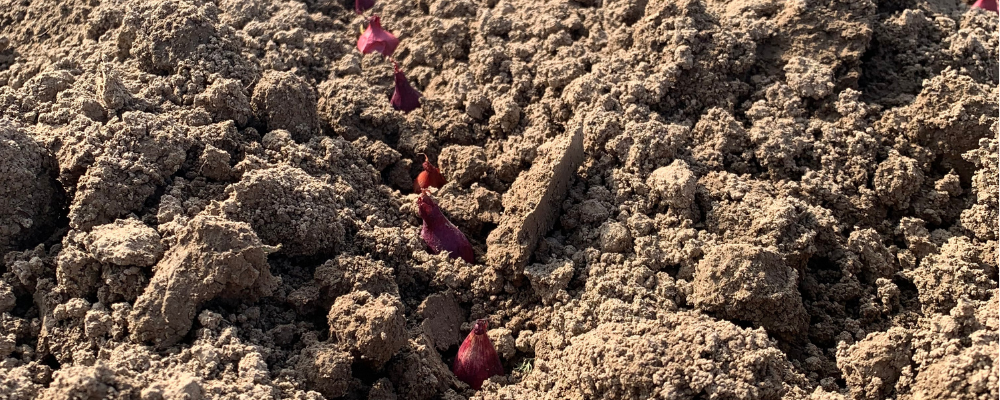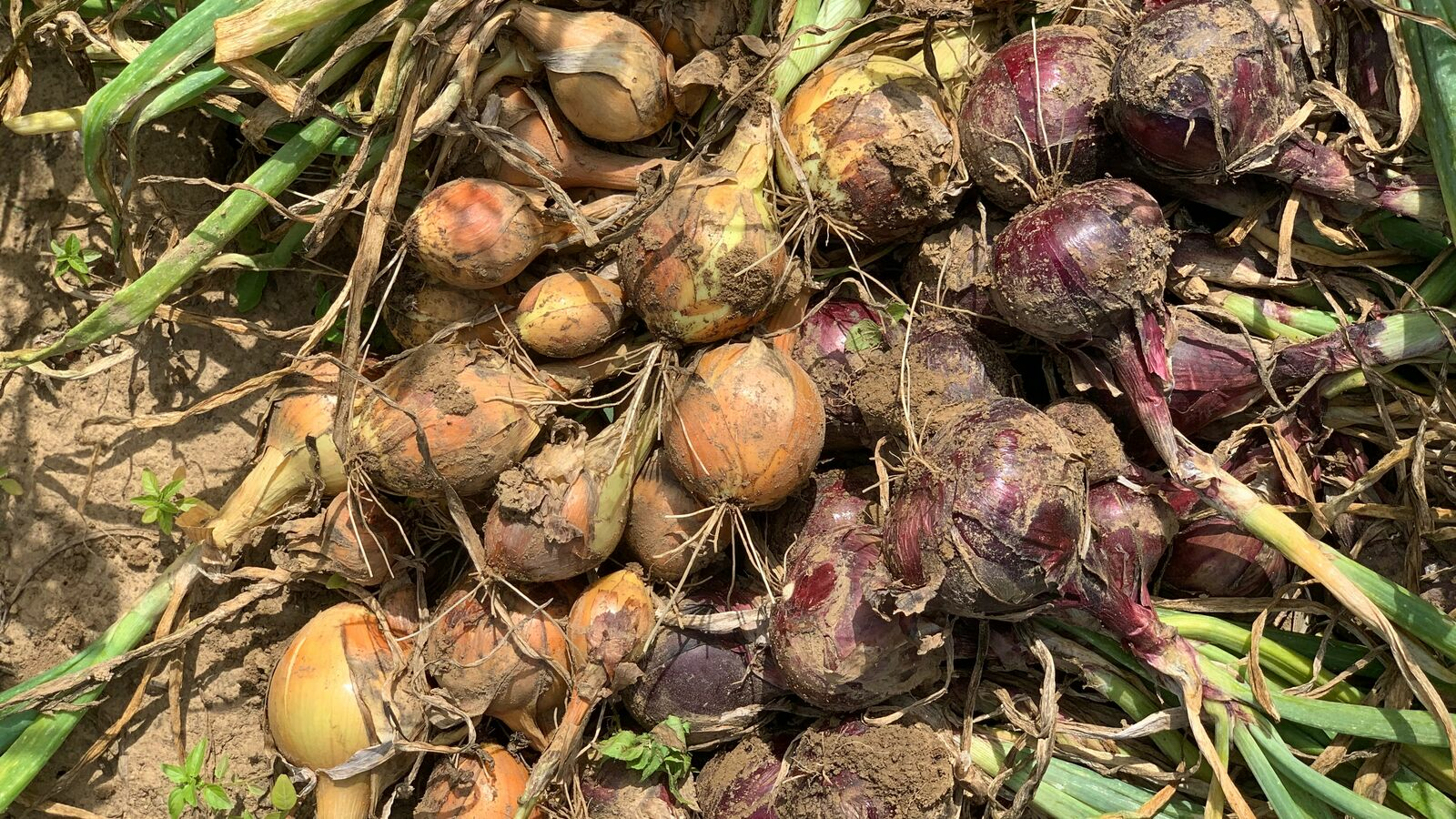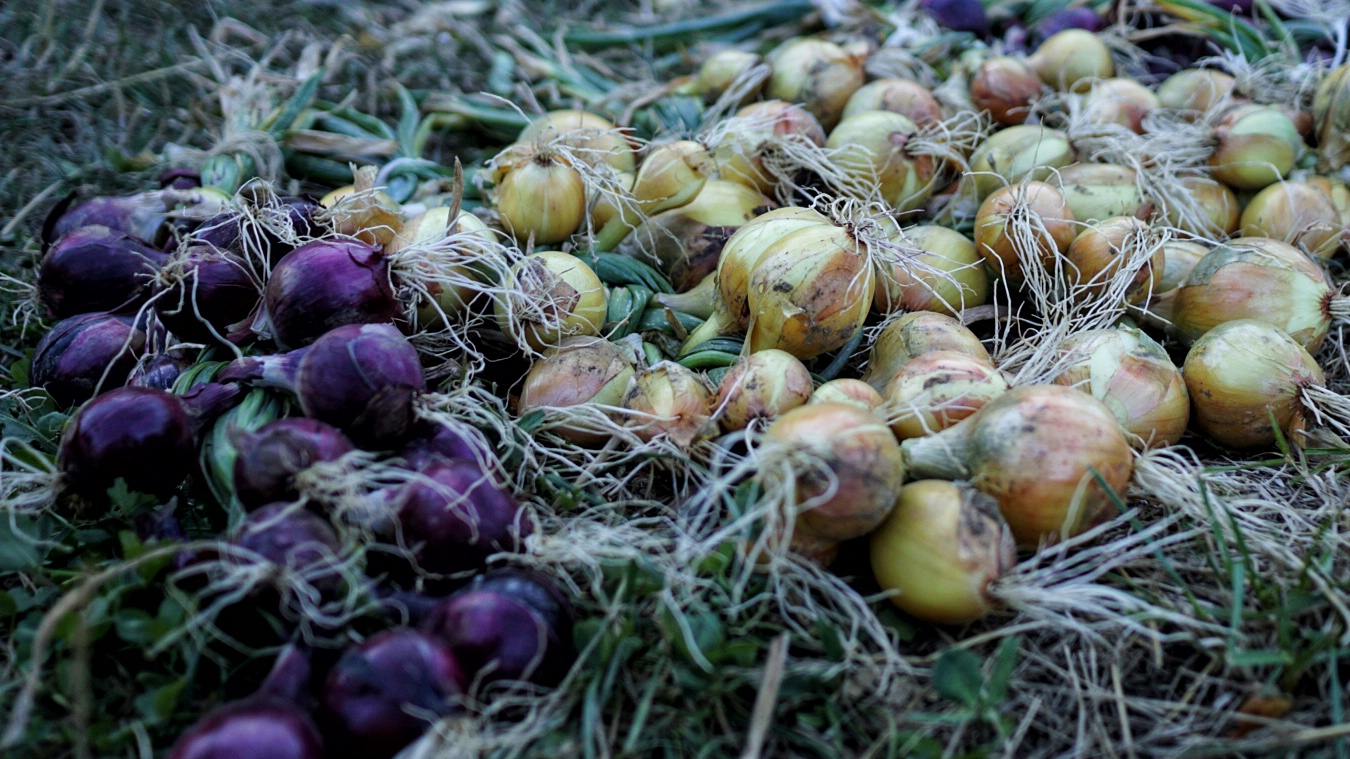Things to know about growing onions
Things to know about growing onions
It will soon be time to start thinking about what to grow next year. From reports in the community, I could see that many users have been thinking about onions. Onions are actually easy to grow: Seeds or onion sets in the soil and that's it. Keep the onions free of overgrowth, fertilize them sparingly and water them only in moderation. But it's the subtleties that give us beautiful onions. I've just put together everything there is to know about onions (I hope I haven't forgotten too much).
Differences and similarities between onions

Differences: A distinction is made between seed onions and onion sets. Onion sets can be small seeded onions from the previous year, or shallots, which are onions from a bundle of onions from the previous year. Onion seed is from the flowers that the onion produces the following year (shallots have to remain in the ground over the winter. Similarities: Seed onions and onion sets can generally be sown in spring or late summer. I won't go into more detail about overwintering sowing, as it is not practised as often, is more labour-intensive (advisory board) and has a higher risk of failure (weather conditions). Why these different ways of growing onions? What's in it for me as a gardener? What is right for me?
A comparison of cultivation methods
Direct sowing: A long cultivation period, a high cultivation risk, but also high product quality Advantages: Large selection of varieties. Disadvantages: In cold weather, a long dormant period until emergence. Weeds are often faster, which leads to the need for frequent weeding. Cultivation via onion sets: Short cultivation period, low cultivation risk, but only average product quality. Advantages: Growth advantage of 2 - 3 weeks over seed onions, less effort required for weed control in the early stages than with seed onions. Disadvantages: Limited choice of varieties, greater risk of imperfect seed. Cultivation via young plants: A short to medium cultivation period, a low to medium cultivation risk, but high product quality. Advantages: Growth advantage of 4 weeks over seed onions, less effort required for weed control in the early stages than with seed onions. Disadvantages: Effort required for pre-cultivation.
What needs to be observed during the cultivation period:
Fertilization: Onions are weak eaters, so they need little fertilizer. Nitrogen in particular should be used sparingly, as it has a negative effect on storage life. Fertilizing with nitrogen too late can lead to "thick necks" (more under diseases). Irrigation: In the early stages to make it easier for sown onions to break through the crusted soil. Between the 8-leaf stage and bulb formation, the onion reacts sensitively to a lack of water. Watering should be discontinued once the leaves have turned. Damp leaves in the morning and evening encourage downy mildew, but the most important measure is weed control. However, I personally neglect this somewhat towards the end of the cultivation period, or only do it very carefully to avoid damaging the bulbs or premature loosening.
Damage and nutritional disorders
Shoots: especially with onion sets, with strong temperature fluctuations and too large sets Frost damage: yellow leaf spots, disappear under good growing conditions Yellow tips: Stress, usually drought Thick necks: too late sowing, too much irrigation, too far apart Glassiness: is favored by high temperatures, late harvest, changeable weather, insufficiently mature bulbs, too much sunlight after harvesting
Diseases/pests and prevention
There are a number of possible diseases and pests that we will hopefully be spared from. I won't list them here in detail, but if you notice anything, please do your research. For diseases, I will list the general measures that can be taken to prevent them, and for pests, what pests there are. Pests that can occur: Onion thrips, leek leaf miner, onion fly, stem nematodes. Preventing diseases: downy mildew, onion neck rot and powdery mildew can occur. The right choice of variety, healthy seeds and seedlings, crop rotation, correct storage and plant strengthening agents can help here. The following have a negative effect on the plants: high crop density and incorrect irrigation should be avoided.
Diseases/pests and prevention
There are a number of possible diseases and pests that we will hopefully be spared from. I won't list them here in detail, but if you notice anything, please do your research. For diseases, I will list the general measures that can be taken to prevent them, and for pests, what pests there are. Pests that can occur: Onion thrips, leek leaf miner, onion fly, stem nematodes. Preventing diseases: downy mildew, onion neck rot and powdery mildew can occur. The right choice of variety, healthy seeds and seedlings, crop rotation, correct storage and plant strengthening agents can help here. The following have a negative effect on the plants: high crop density and incorrect irrigation should be avoided.
What is important when selecting varieties

When selecting varieties, you should pay attention to disease tolerance, bolt resistance, shelf life and skin strength. Onions are an exciting and broad field. I have already published comments on harvesting and storage in the summer; I have not gone into winter cultivation as only a few people do it, as the risk of a bad harvest is significantly higher than with summer cultivation. The perfect onion is rare, have a look when you go shopping, there are usually only class II onions. However, this does little for the consumer as long as there is no damage or rot, so I won't go into detail on this either. I'm sure I've forgotten one or two things, so bear with me. With these explanations, you should have the basis for a successful onion year 2023. By the way: in America, the Onion Rings Day is celebrated on 22 June and National Onion Day on 27 June. your Schöpp op
